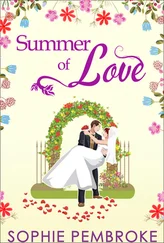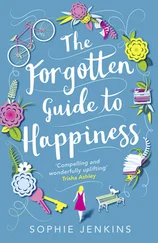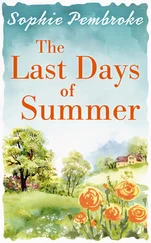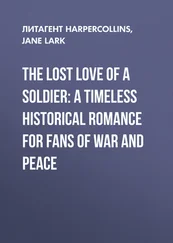I am alone in my carriage, with the fifty-six other passengers. Alone together, moving to the same rhythm. I pull my phone out. There are squares and squares of photographs that contract at the touch of the screen, disappearing into tessellated blocks, a mosaic of motherhood. One of a parent’s first instincts, one of the first things they do once a child enters their life, is to begin to capture it. To render it still and permanent. As children grow, the photograph album, or the ever-present camera phone, is like a talisman. We photograph our children a thousand times. To pin them down, as if the recording might render them ours for ever, ever more perfect, but never more perfect. Photographs: the only place where things can last, as the gaze from the screen stares out of time. An illusion. It’s where we outsource our lament against time’s passing. Where we park our fear of death. White borders contain it all. Nothing must be lost.
The man on the other side of the aisle is writing an email, and the woman in front of me is staring at a spreadsheet. My phone is about to go flat, but I can still look at pictures of my children, for now. And later, I will still picture them, like negatives, the pair of them shuttering across the back of my mind with a wave of impossible love. There they are – still – hanging upside down off the rails near the park, laughing with open mouths. Squinting into the sun beside a beach hut. Holding ice creams in hands that are small.
Men can do nothing without the make-believe of a beginning.
George Eliot, Daniel Deronda
Anna turns another page of her English novel. The woman who has been out riding is now writing a letter, then putting an imaginary hat on, before walking out of the door for the imaginary station. What Anna reads is make-believe, but that’s her substance too. She is a chimera, pure fiction. Not that there’s anything pure about fiction. Anna is pieced together, as we all are, by fragments of others, imaginary and real. She is a combination. A blend. An infusion of people who Tolstoy had met, or missed. Of things that he’d read, or imagined his heroine might have read. Open her up, case by case, like a Russian matryoshka doll, and the selves reveal themselves. Lined up, an identity parade.
One of the dolls is slightly out of line. She refuses to fit. She wants to escape to another story, to break the case and start her own. Her name is Kate Field, and she was a journalist, lecturer and early telephone pioneer. Her thousands of articles – like the people she wrote for – are just a blur on the literary time-line, almost out of view. She is a real woman lost in time. A detail I cannot let go.
Kate Field wasn’t Tolstoy’s muse, not even in the loosest sense of the word. He probably didn’t even know she existed. But in the way that one late train can upset the entire South Western train service, Kate Field made an impression on Tolstoy’s world.
I know the beginning. Not the first day, first hour, first moment, but the general time and place. It began in Florence, where Kate Field first met a man with steady eyes and a way of watching the world. Anthony Trollope was forty-four and married. Field was twenty-one – and she got under Trollope’s skin. Gifts were exchanged (a copy of The Arabian Nights ). And letters. And then they all went home.
But gradually, quietly, the Kate of his imagination entered his fiction. He wrote to her, and began to write about her. Numerous versions of Field haunt his novels. Different sorts of women, all a bit like Field, often called Kate, trail their way through the pages of his books. They found themselves printed and reprinted, imported and placed in bookshops in Paris and Berlin, Moscow and St Petersburg. Whenever Tolstoy readied himself to write, he turned to reading English novels . And this is how Kate Field found her way to Tolstoy. Sitting in Yasnaya, Tolstoy read about these women, these imaginary Kate Fields. He loved them. He lined the books up on his shelf. He remembered them. They crept into his mind, and into his work.
Parts of Kate Field live on in Anna Karenina. Anna Karenina is partly Kate Field. That’s what writers do. They change lives.
— 2005 —
A hot August morning and we lay on top of the bedsheets in a pile of body. You got up to take a call and I looked at my legs on the whiteness.
Summer in the city.
Outside the window, a bird settled on the nearby guttering. It was as free as a bird.
Double portraits are always the hardest, you said as you walked back in. The lens has to settle for something. It has to choose one thing or another. An eye. A coat button. A parakeet.
Battery Place to Cortlandt Street
The last word is not said, – probably shall never be said.
Joseph Conrad, Lord Jim
Distance was Kate Field’s style. Walking down Broadway, taking her time as she crossed over to Fulton and then left again down Greenwich. Rain was promised, and few would have been tramping the usually crowded sidewalks, as the sky above Lower Manhattan turned dark grey. Then stopping at the Friend Pitts store near Amity Street (now West 3rd), to pick up a precautionary umbrella. Down to the intersection of Cortlandt and Greenwich Street.
She’d just been framed – a picture with Anthony – and now she was trying to get away. She was always trying to get away. Her life was a series of broken connections, a shimmering circle, closed on the outside. The sitting had taken an age. They could have gone to any one of the quicker Broadway studios. Fredericks’ Photographic Temple opposite the Metropolitan or to Gurney’s, further down. But Napoleon Sarony at 680 was the go-to. He could render the impression of something coming into relief, almost stepping out of the paper. His figures were all life and expression . No stiff jaws and staring eyes for him, none of those brocade drapes and sad ferns. Sarony made a body seem in motion, even while that body was caught in an iron head brace, waiting for twenty seconds or more, not moving. He was an illusionist, playing with time. Slow motion looked fast. Still looked like moving.
She was glad not to be near all those people any more, to leave the cluttered studio. A large alligator hung from the ceiling of his waiting room. Greek busts and tapestries jostled for space with stuffed birds and lampstands shaped like Buddhas. The studio itself was stark and strange – full of glare and bareness, metal posing frames. The smell of ether and lavender oil, asphalt and sandarac gum, of dragon’s blood.
The photograph of the pair hasn’t survived. Lost or destroyed. Broken maybe. But what would it have told us anyway? For it is feeling that we lose in time. The feeling that lies between. The tension or the frisson. The flirtation, or unrequited love. There is no earthly way to record the thing that never happened, even if two people know how nearly it did. What makes someone walk into the middle of someone else’s marriage or out of the centre of their own? What makes someone end a relationship, or a life, placing their foot into the future’s thin air? What makes someone start an affair?
People talk. They say Trollope and Field were in love – or, at least, that he loved her, or almost loved her. They say his wife knew, or was vexed by it. They read between the lines of his novels. Tell us that he never got over her. The photographs we have tell us something, and nothing. If the camera never lies, then the separate photos that remain show two people neither gazing into the lens, nor looking in quite the same direction. Trollope sits straightforwardly, angled just a little away from centre, as if he is about to say something to someone. His eyes look directly at the viewer through his metal spectacles, his enormous beard runs from the top of his ears out towards the camera. Her eyes are set at a middle distance dream, her face and shoulders a quarter-turn from the camera lens. Her hair looks fine. Caught before the rain began. Appearances mattered to Field. She had a resistant longing for belongings. For dresses and bonnets and gloves. She was flamboyant. Camp, even. Hoping that rules can be bent.
Читать дальше












